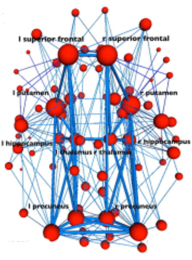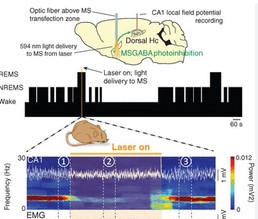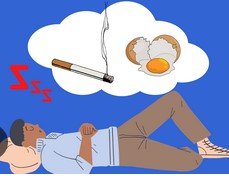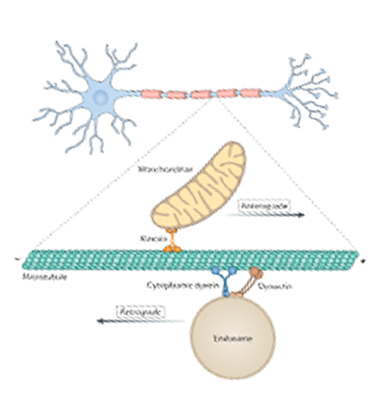Tuesday, 9 January 2024
Differences between individualist and collectivist cultures

This week I am going to very briefly summarize the profound differences between the individualist cultures of North America and the collectivist cultures of East Asia, as reported by Robert Sapolsky in his book Behave: The Biology Of Humans At Our Best and Worst. (more…)
From Thought to Language, How the Mind Develops | Comments Closed
Monday, 4 December 2023
The “rich club” of networks in the human brain
 What is known as the “rich club” in the human brain consists of densely interconnected regions of neurons that show little plasticity. The activity of these networks is highly stable , and the regions involved are rapidly informed of other neuronal events that occur throughout the brain . The neurons in this “rich club” may be regarded as one end of a continuum in terms of their low plasticity and the many connections that they make with other parts of the brain. The other end of the continuum consists of neurons that show a high degree of plasticity but are connected to relatively few other neurons and have a far lower level of activity. Along this continuum, just about every other possible combination of these traits can be found. It has been estimated, however, that the “rich club”, while accounting for only about 20% of the total population of neurons in the human brain , also accounts for nearly 50% of its total activity ! (more…)
What is known as the “rich club” in the human brain consists of densely interconnected regions of neurons that show little plasticity. The activity of these networks is highly stable , and the regions involved are rapidly informed of other neuronal events that occur throughout the brain . The neurons in this “rich club” may be regarded as one end of a continuum in terms of their low plasticity and the many connections that they make with other parts of the brain. The other end of the continuum consists of neurons that show a high degree of plasticity but are connected to relatively few other neurons and have a far lower level of activity. Along this continuum, just about every other possible combination of these traits can be found. It has been estimated, however, that the “rich club”, while accounting for only about 20% of the total population of neurons in the human brain , also accounts for nearly 50% of its total activity ! (more…)
From the Simple to the Complex | Comments Closed
Wednesday, 15 November 2023
Memory consolidation during REM sleep

Out of all the experiments that have been done on memory consolidation and REM sleep, there is one, published in 2016, that I especially love mentioning because it was done at the Douglas Hospital research centre that enabled me to develop this website. Sylvain Williams and his research team successfully used optogenetics to silence inhibitory neurons in the medial septum of mice. Without disturbing the animals’ sleep, the researchers were able to greatly attenuate the 4 to 8 Hz theta rhythm that is associated with memory consolidation during REM sleep. Upon awakening, the mice did not remember the new location of an object. This treatment also disrupted a fear that had been conditioned in a certain context. In contrast, silencing the inhibitory neurons in the medial septum outside of episodes of REM sleep had no effect on memory. (more…)
Memory and the Brain, Sleep and Dreams | Comments Closed
Thursday, 12 October 2023
Targeted memory reactivation during sleep

Today I’d like to talk a bit about learning passively while you sleep—for example, by playing a recording. As it turns out, this process seems to work only for very simple forms of associative learning under very specific conditions. You can’t learn anything completely new in your sleep. So, for example, if you play Spanish or French language tapes during the night, without doing anything else, you won’t get any results, except for maybe a bad night’s sleep. (more…)
Sleep and Dreams | Comments Closed
Tuesday, 19 September 2023
Mechanisms underlying anatomical the tracing methods
 Today I’d like to tell you about the cellular mechanisms underlying the tracing methods used to visualize the paths that axons follow from one structure in the brain to another. The use of these methods in animal models is based on the ability that neurons have to move molecules along the microtubules in their axons. This process is essential to the normal functioning of neurons and is known as axonal transport. It works by means of motor proteins that, when supplied with a bit of energy, constantly change form to drive all kinds of molecules carried in vesicles, a bit like a porter with a load on his back. There are some animations on the Internet that illustrate this process, and it’s pretty impressive! (more…)
Today I’d like to tell you about the cellular mechanisms underlying the tracing methods used to visualize the paths that axons follow from one structure in the brain to another. The use of these methods in animal models is based on the ability that neurons have to move molecules along the microtubules in their axons. This process is essential to the normal functioning of neurons and is known as axonal transport. It works by means of motor proteins that, when supplied with a bit of energy, constantly change form to drive all kinds of molecules carried in vesicles, a bit like a porter with a load on his back. There are some animations on the Internet that illustrate this process, and it’s pretty impressive! (more…)
From the Simple to the Complex | Comments Closed







